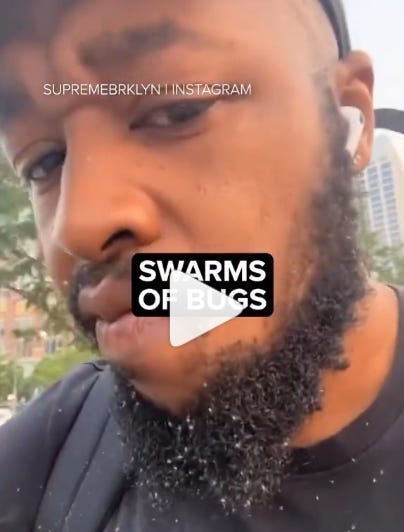
Hi, guys!
As if the smoke from Canadian wildfires wasn’t bad enough, there have been clouds of gnat-like insects swarming people — horror-movie style — in New York City these past few days. And as it turns…
Keep reading with a 7-day free trial
Subscribe to The Weekly Dirt with Jessica Damiano to keep reading this post and get 7 days of free access to the full post archives.


